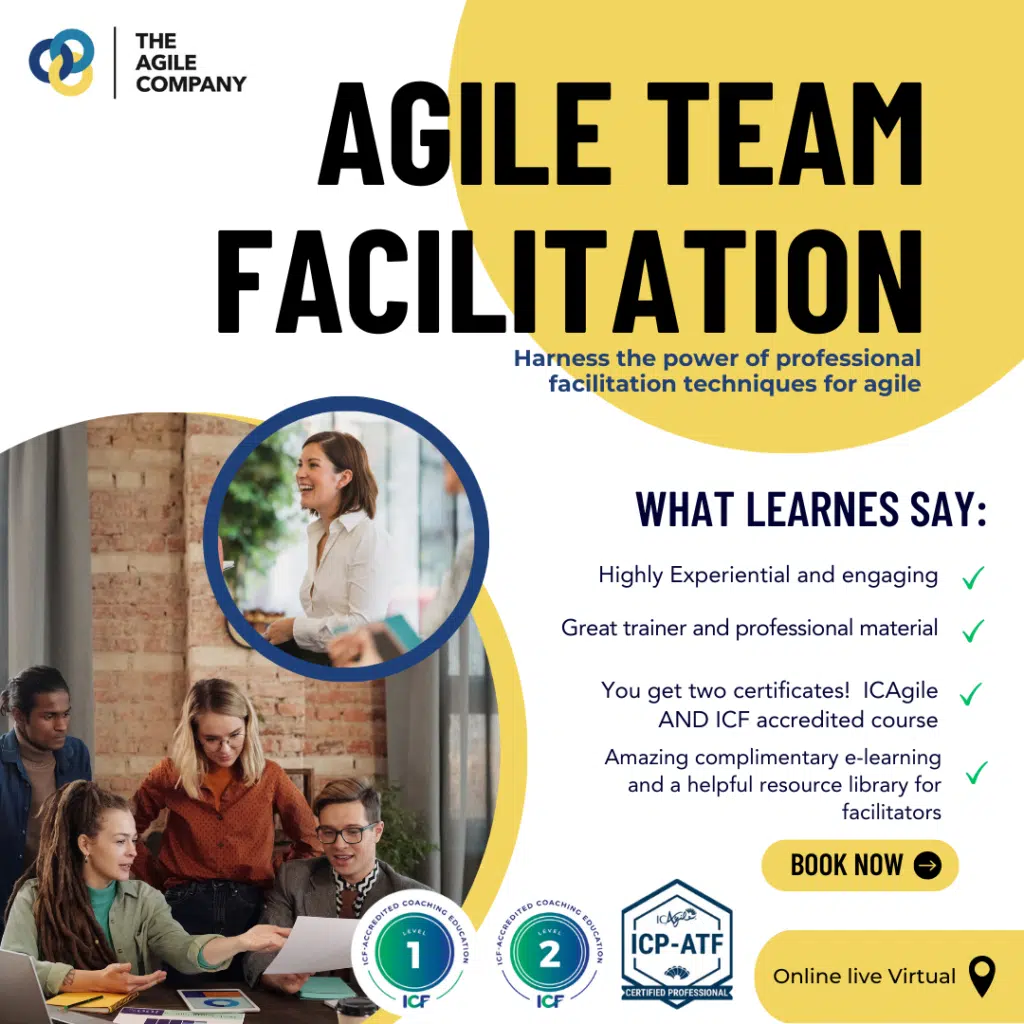Facilitation, in its simplest form, is the process of making something easier or less difficult. In the context of team dynamics, a facilitator acts as a guide to help teams navigate complex discussions, solve problems, and make decisions effectively. This role becomes particularly crucial in Agile environments, where collaboration, flexibility, and continuous improvement are paramount. Agile Team Facilitation, therefore, is not just about managing meetings but fostering an environment where teams can thrive and deliver value consistently.
Understanding Facilitation
Facilitation is often misunderstood as merely keeping meetings on track. While this is a part of the job, true facilitation goes much deeper. It involves understanding team dynamics, recognizing and addressing conflicts, encouraging participation, and ensuring that every voice is heard. A facilitator’s goal is to help the team achieve its objectives while fostering a culture of trust and collaboration.
Facilitation shouldn’t be “winged” or improvised. Only highly skilled and experienced facilitators will be able to jump into any meeting and guide it to success. But you can learn to master the skills of the Agile Team Facilitator and with some practice and an healthy dose of feedback, you too can master the Agile team Facilitator role!
The Role of an Agile Facilitator
In Agile frameworks like Scrum, the role of the facilitator is often filled by the Scrum Master. However, facilitation skills are valuable for anyone involved in Agile teams, from product owners to team members. Here are some key responsibilities of an Agile facilitator:





Perspectives on Agile Team Facilitation
The effectiveness of Agile facilitation can be viewed from multiple perspectives, each highlighting the unique benefits and challenges associated with the role.
From a Team Member’s Perspective
As a team member, having a skilled facilitator can significantly enhance the work experience. A good facilitator helps in articulating ideas clearly and ensures that everyone has a chance to speak. This inclusivity can lead to better decision-making and more innovative solutions. Additionally, by managing conflicts and fostering a supportive environment, facilitators can help reduce stress and improve overall team morale.
From a Product Owner’s Perspective
For product owners, a facilitator is an invaluable ally. They help ensure that the team remains focused on delivering value to the customer. Facilitators can help in refining and prioritizing the product backlog, ensuring that the team’s efforts are aligned with the product vision. This partnership allows product owners to concentrate on strategic decision-making while the facilitator handles the day-to-day team dynamics.
From a Scrum Master’s Perspective
For Scrum Masters, facilitation is at the heart of their role. Effective facilitation helps in conducting efficient Scrum ceremonies such as daily stand-ups, sprint planning, reviews, and retrospectives. A skilled Scrum Master uses facilitation techniques to drive continuous improvement, helping the team to reflect on their processes and identify areas for enhancement. By mastering facilitation, Scrum Masters can significantly impact the team’s productivity and satisfaction.
From a Leadership Perspective
From a leadership perspective, facilitators play a critical role in driving organizational success. Leaders rely on facilitators to ensure that Agile principles are practiced consistently across teams. Facilitators help align team activities with organizational goals, support cultural transformation, and enhance communication between different levels of the organization. By fostering an environment of continuous improvement, facilitators help leaders achieve strategic objectives and drive innovation.
From a Stakeholder’s Perspective
For stakeholders, including customers and business partners, facilitators are key to ensuring transparency and alignment. Facilitators help stakeholders understand the team’s progress, challenges, and achievements through clear communication and regular updates. They also ensure that stakeholder feedback is incorporated into the development process, enhancing the final product’s value. By bridging the gap between the team and external parties, facilitators help maintain trust and collaboration.
Techniques for Effective Agile Facilitation
Active Listening
Tip: Make eye contact, nod, and use verbal affirmations like “I see” or “Go on” to show that you are engaged.
Example: During a retrospective, a team member mentions that they feel overwhelmed with their current workload. Instead of offering a solution right away, the facilitator listens attentively, acknowledges their feelings, and asks follow-up questions to fully understand the issue. This not only builds trust but also uncovers the root cause, which might be related to task prioritization or resource allocation.
Open-Ended Questions
Tip: Use questions that begin with “What,” “How,” or “Why” to encourage more detailed responses.
Example: Instead of asking, “Do you think the sprint went well?” which can be answered with a simple yes or no, a facilitator might ask, “What were the highlights and challenges of this sprint?” This prompts the team to reflect more deeply and provides richer insights into their experiences.
Visual Facilitation
Tip: Incorporate tools like mind maps, flowcharts, and Kanban boards to visualize complex information.
Example: During a sprint planning session, the facilitator uses a whiteboard to map out the user stories, tasks, and dependencies. This visual representation helps the team see the bigger picture, identify potential bottlenecks, and make more informed decisions.
Time Boxing
Tip: Clearly communicate the time limits at the start of the meeting and use timers to keep track.
Example: In a daily stand-up, the facilitator allocates two minutes per person to share their updates. This ensures that the meeting remains brief and focused, respecting everyone’s time and keeping the team aligned without unnecessary delays.
Conflict Resolution Techniques
Tip: Use structured methods like “Fist to Five” for gauging consensus or “The Five Whys” to delve into root causes.
Example: During a disagreement about the implementation of a new feature, the facilitator uses the “Fist to Five” technique to quickly gauge the team’s level of agreement. If any team members show less than a five, the facilitator asks them to explain their concerns, leading to a more balanced discussion and a consensus-driven decision.
Designing Interactive Workshops
Tip: Incorporate a mix of activities that cater to different learning styles, such as group discussions, hands-on exercises, and role-playing scenarios.
Example: For a workshop on improving team collaboration, the facilitator designs an agenda that includes an icebreaker activity, a brainstorming session using sticky notes, a group exercise to simulate a project, and a reflective discussion to consolidate learning. This variety keeps participants engaged and enhances the learning experience.
Facilitator Presence
Tip: Maintain a calm and composed demeanor, be approachable, and demonstrate empathy and understanding.
Example: During a particularly heated retrospective, the facilitator remains calm and composed, gently guiding the conversation and ensuring that each team member has a chance to speak. By modeling respectful and attentive behavior, the facilitator helps to de-escalate tensions and foster a more constructive dialogue.
Agile Team Facilitation Course at The Agile Company
The Agile Company offers a comprehensive Agile Team Facilitation course designed to equip participants with the essential skills needed to effectively guide Agile teams. This course covers fundamental facilitation techniques, advanced conflict resolution strategies, and innovative methods for fostering collaboration and engagement. Participants will learn how to create a psychologically safe environment, manage diverse team dynamics, and ensure that all voices are heard during meetings and workshops. Through a blend of interactive workshops, hands-on exercises, and real-world scenarios, attendees will leave with the confidence and tools necessary to become exceptional facilitators, capable of driving continuous improvement and delivering value within their Agile teams.








